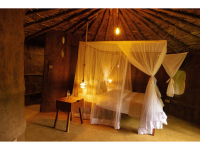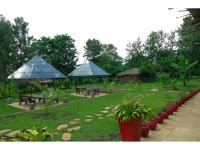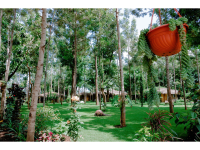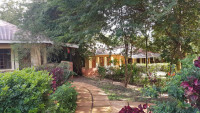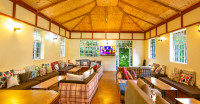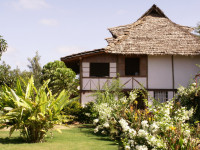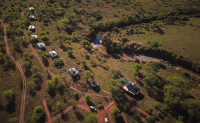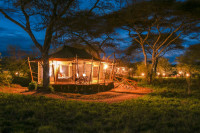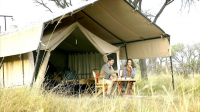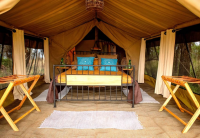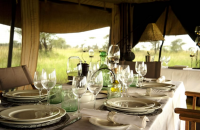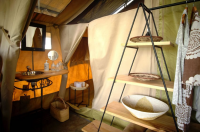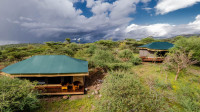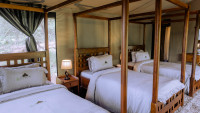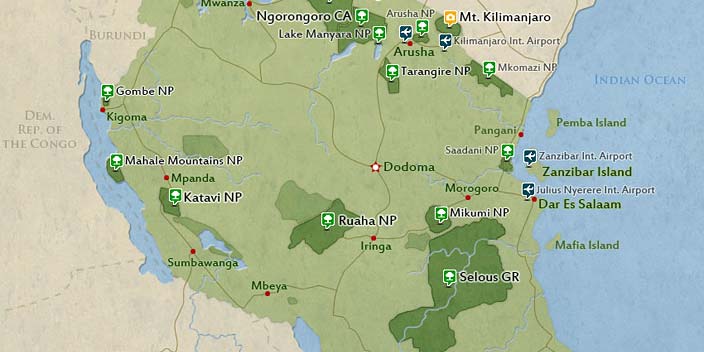
$3,394 to $3,586 pp (USD)
2 travelers on Start dateArrival
Arrival

Day 1
Arrival in Arusha
Arrival in Arusha
On arrival at Kilimanjaro International Airport (JRO) or Arusha Airport (ARK) which caters for domestic flights, you will be met by an African Big Cats Safaris representative who will drive you to your accommodation in Arusha. Your overnight will be at Mtoni River Lodge.
- Main Destination:
- Arusha (City)
- Accommodation:
- Mtoni River Lodge
- Meals & Drinks:

Day 2
Arusha to Tarangire National Park
Arusha to Tarangire National Park
After breakfast, we will depart for Tarangire National Park. The park is named after the Tarangire River which runs through it. This ‘river of warthogs’ is the only source of water for wildlife in the region during the dry season. In some places, the vegetation is quite dense, including elephant grass. The park is well known for its elephant families, which can often be seen congregating by the river. You may also see giraffes, bushbucks and hartebeests. These animals are closely followed by a range of predators, including lions and leopards. There are more breeding species of birds found in Tarangire National Park than anywhere else on the planet. Tarangire is the best place to see these gentle giants in their natural habitat—from the adorable calves all the way up to the intimidating bulls. Late in the afternoon, drive to Ngorongoro highlands. Dinner and your overnight stay will be at Eileen's Tree Inn.
- Main Destination:
- Tarangire National Park
- Accommodation:
- Eileen's Trees Inn
- Meals & Drinks:

Day 3
Serengeti National Park
Serengeti National Park
After an early breakfast, drive through the Ngorongoro Conservation Area and on to Serengeti National Park with game viewing en-route. Serengeti National Park is undoubtedly the best-known wildlife sanctuary in the world, unequalled for its natural beauty and scientific value. It has the greatest concentration of plains game in Africa. It is the migration for which Serengeti is perhaps most famous. Over a million wildebeest and about 200,000 zebras flow south from the northern hills to the southern plains for the short rains every October and November. Then they swirl west and north after the long rains in April, May and June. So strong is the ancient instinct to move that no drought, gorge or crocodile-infested river can hold them back. Serengeti is truly home to the legendary great wildebeest migration. The Serengeti National Park is where safari-goers come to truly experience an African safari. Dinner and your overnight stay are at Embalakai Camp.
- Main Destination:
- Serengeti National Park
- Accommodation:
- Embalakai Serengeti Camp
- Meals & Drinks:

Day 4-5
South Serengeti (Ndutu)
South Serengeti (Ndutu)
After breakfast, we will head towards the far south of the Serengeti National Park, also known as the Ndutu.
Lake Ndutu area, situated in the Ngorongoro Conservation Area is part of the southern Serengeti ecosystem. Lake Ndutu is alkaline, like most of the other Rift lakes, however, the water is still drinkable and used by a wide array of local wildlife. The majority of the wildebeest migration can normally be found on the short-grass plains from December to April. The area is usually heavily populated with elephants, birds and resident game. The Ndutu Region forms part of the northern section of the Ngorongoro Conservation Area and stretches to the unfenced southern reaches of the Serengeti National Park, a meeting point between these two incredible wilderness areas. After lunch and an extensive game drive, you will spend two nights at your Tented Camp.
- Main Destination:
- Southern Serengeti National Park
- Accommodation:
- Intimate Camp Zebra
- Meals & Drinks:

Day 6
Ndutu to Ngorongoro
Ndutu to Ngorongoro
Early morning after breakfast, we will continue with our en-route drive in the Ndutu area before we depart to Ngorongoro. When you first see Ngorongoro Crater, it looks like a forgotten world. Every December, the Ndutu plains begin to stir. Wildebeests arrive in their hundreds of thousands. Scraggy resident predators prepare for three months of abundance. The safari experience baffles the imagination and its superb value. Concealed by the steep volcanic walls is a pristine wilderness including sweeping savannah, pockets of acacia woodland and glistening lakes and swamps. At the heart of the South Serengeti lies the world-famous Ndutu. Offering consistently the best wildlife viewing during the green season, Ndutu is strategically situated at the centre of the southern plains although the immediate area is blanketed with a forest of acacia trees. Arriving at our accommodation in the late evening, we will have our dinner and overnight at Embalakai Ngorongoro.
- Main Destination:
- Ngorongoro Highlands
- Accommodation:
- Embalakai Ngorongoro Camp
- Meals & Drinks:

Day 7
Ngorongoro Crater to Karatu
Ngorongoro Crater to Karatu
After breakfast, drive to Ngorongoro Crater for a game viewing drive. The Ngorongoro Crater is one of Africa’s most famous sites and is said to have the highest density of wildlife in Africa. Sometimes described as an ‘eighth Wonder of the World’, the crater has achieved world renown status, attracting an ever-increasing number of visitors each year. You are unlikely to escape other vehicles here, but you are guaranteed great wildlife viewing in a genuinely mind-blowing environment. There is nowhere else in Africa quite like Ngorongoro! One of the best places in the country to see the endangered black rhinoceros, the park is home to the entirety of the Big Five and is a particularly good place to see lions, herds of wildebeest, zebras and Cape buffalo all year round. A packed lunch will be served at a picnic site. Late in the afternoon, drive to Ngorongoro highlands. Dinner and your overnight stay are at Eileen's Tree Inn.
- Main Destination:
- Ngorongoro Crater
- Accommodation:
- Eileen's Trees Inn
- Meals & Drinks:

Day 8
Lake Manyara National Park to Arusha
Lake Manyara National Park to Arusha
Have breakfast in the morning and continue with a short drive to Lake Manyara National Park for game viewing drives where your first encounter will be spotting large troupes of baboons. Established specifically to protect the elephant herds that have made the area renowned, the park provides an amazing wildlife experience. Elephants are not the only animals that Lake Manyara is famous for. Tree climbing lions are occasionally sited. The alkaline soda of Lake Manyara is home to an incredible array of birdlife that thrives on its brackish waters. Pink flamingos stoop and graze by the thousands of colourful specks against the grey minerals of the lake shore. Even reluctant bird-watchers will find something to watch and marvel at within the national park. A packed lunch will be served at a picnic site. Later in the afternoon, drive back to Arusha in time for your flight back home or a flight to Zanzibar.
- Main Destination:
- Lake Manyara National Park
- Accommodation:
- No accommodation (End of tour)
- Meals & Drinks:


